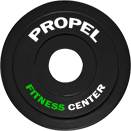There are many types of lifting and workout shoes on the market today. What most workout enthusiasts don’t realize is that depending upon the exercise you are doing, there is a specific shoe designed for it. Having the right shoe will make all the difference when it comes to setting a new personal record on a lift or run, and protecting your whole body starting with the foundation, the ankle.
To make things simple, I broke down the four main styles of shoe: Olympic lifters, Flat Sole, Running Shoes, and Cross-trainers.
Olympic lifters have a lifted sole that is hard and firm. This helps with a number of things. First, if you have limited dorsiflexion (range of motion in the ankle), this will help you to maintain a stable foot position in the squat with the whole foot keeping contact to the ground. Second, if you do a lot of Olympic lifts or High-bar squat, it will help you maintain a more upright torso. They also help with stabilizing the ankle, which will help when creating torque in the hip.
Flat sole shoes also have a hard sole but no raised heel (hint flat sole). Flat sole shoes, like chucks, work great for deadlifts and low bar squatters. The hard sole helps with energy transfer from the ground up and more stability. With no cushion to absorb energy, this will allow you to transfer more energy into the lift itself. Also, with flat sole shoes, you are closer to the ground, which means less distance the bar has to travel.
Running shoes are designed for just that, running. They are great for other cardio-based exercises as well like, jump rope, squat jumps, and various plyometric drills. The cushion in them helps absorb energy so you joints don’t take as much stress and impact. This will help save your joints down the road if you do a lot of running. Lifting in running shoes is not a good idea because once you are under a heavy load the cushion in them can cause the ankle to become unstable. Which leads to pronation or supination of the ankle and will result in injury, whether at the ankle, knee, and/or hip.
There are cross-training shoes out there as well that have a relatively flat sole with good cushion support. These shoes are great for the general workout enthusiast who is not in it to set one rep maxes on lifts but for the individual that likes to lift weights and do low intensity cardio movements.
Next time you are considering what shoes to get, keep this in mind with your next purchase. It will help with injury prevention and help you hit those new PR’s.

